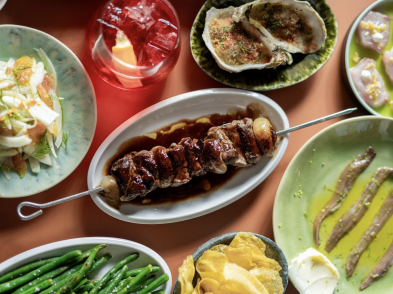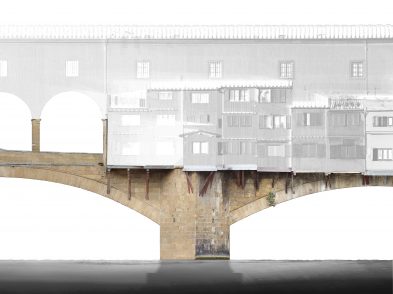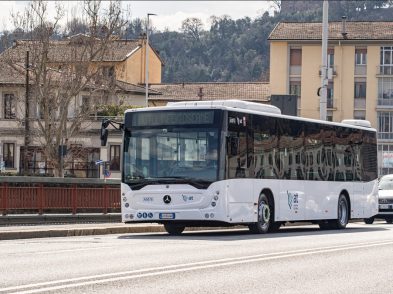“One, two, three, four, five, SIX.” The number of pleasure craft navigating the Arno on any given evening can no longer be counted on the fingers of one hand. On crossing Ponte alla Carraia one Monday evening, realization dawned that I had never seen our river so brimming with traffic.
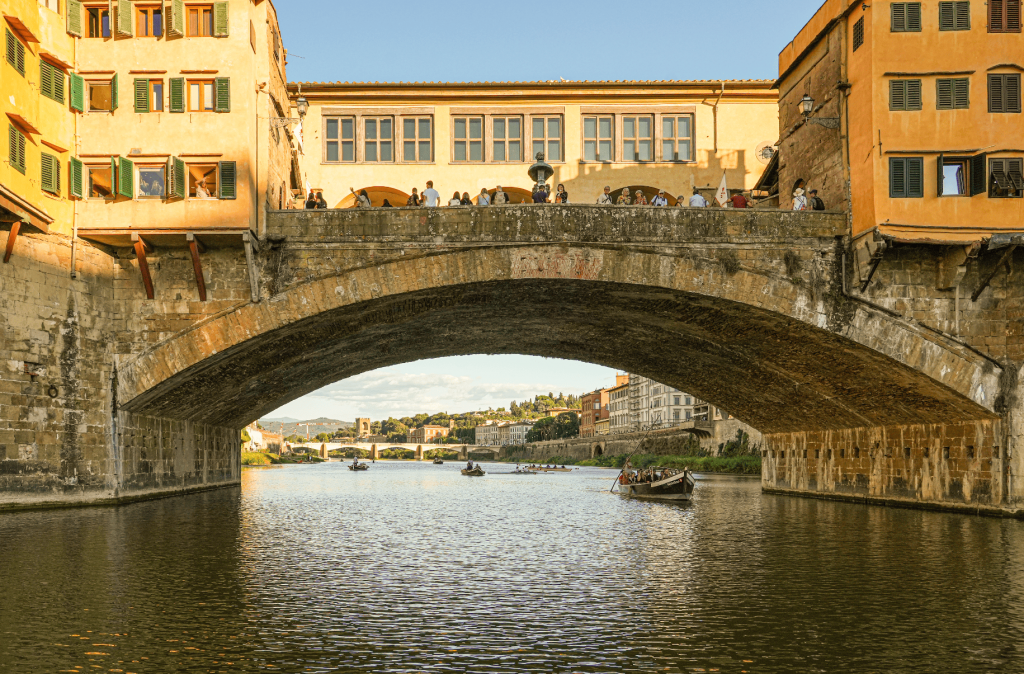
So, what has prompted this return to the river? In October 2021, a roundtable met to work towards achieving a “navigable Arno” from the source to mouth. As part of the Pact for the Arno, representatives from across Tuscany discussed the river’s navigation history. “The ability to navigate the Arno remained uninterrupted until the second half of the nineteenth century when the construction of railways and bridges took people away from the river,” explained Francesco Salvestrini, a professor of medieval history at the University of Florence. The comment by Marco Bottino, president of the National Association of Consortia for the Management and Protection of the Local Area and Irrigation Water in Tuscany, showed the change in direction down the centuries. “Thanks to the joint efforts of the region, municipalities and reclamation consortia, the Arno is seen less as a threat and more as a resource. We want to work with local associations so that the Arno becomes navigable for pleasure and tourism.”
Since then, pleasure crafting along the 1,200-metre-long navigable stretch of the Arno between the San Niccolò and Santa Rosa weirs has become increasingly popular.
The renaioli boats that dredged sand and gravel from the river in the mid 1900s have been revisited for tourism purposes. Once immortalized in artworks by the Macchiaioli movement, locals and internationals depart on 45-minute daytime or sunset rides aboard traditional flat-bottomed craft manoeuvred by gondolier-like sailors with a single pole that leave from lungarno Generale Diaz. Running through the summer until mid-October, I Renaioli reach as far as the Santa Rosa levee before returning to the point of embarkation.

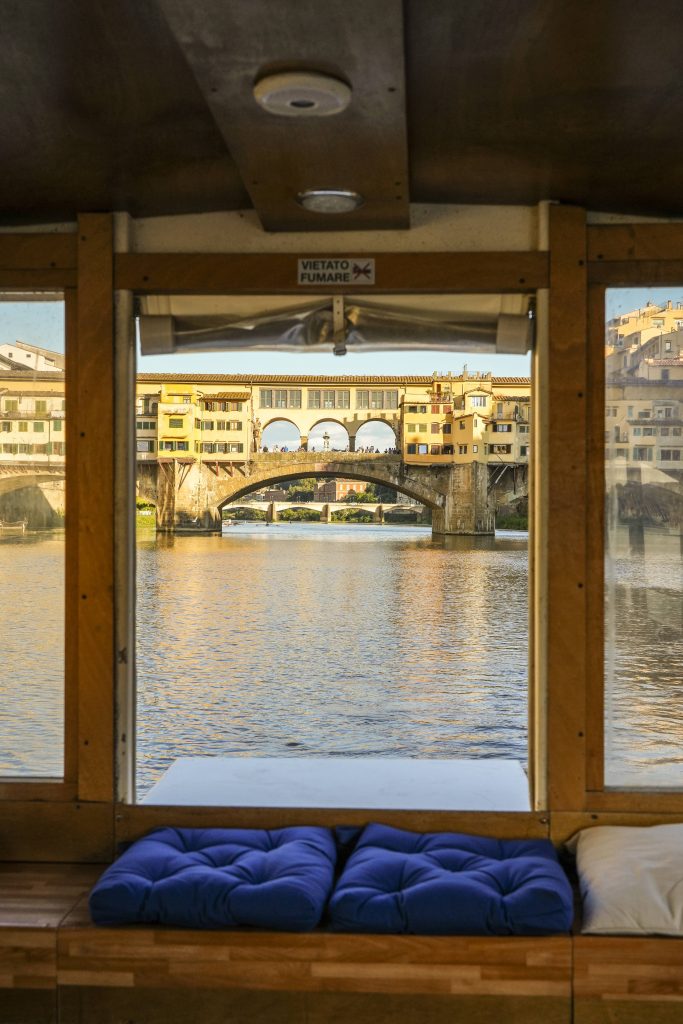
In order to launch their flat-bottomed electric boats along a 2,500-metre circular route, Arnoboat had to acquire permits from the city’s engineering department.
“Our aim from the beginning was to have zero environmental impact,” comments Daniela Ghirelli, co-owner of Arnoboat. “That’s why our engines are powered by solar energy, there are no CO2 emissions, there’s practically no noise and the hour-long tour goes no faster than two knots.” Ghirelli describes the experience as a “walk on water”.
On trying out the new Arnoboat, contemplating the crowds on the city streets above feels impossible. All it takes is stepping aboard to embrace the peace of the river. “It has a lot to do with the calm navigation beneath the three bridges: no waves, silence and the divine golden light, the sun’s gift to Florence,” commented Marco Badiani, who experienced one of the early Arnoboat rides. Taken aback by the immediate success of their venture, the owners of Arnoboat inform us that they have been inundated with compliments, mainly from fellow Florentines, several of whom have returned more than once, bringing friends, especially in the sunset slot. (The Arnoboat has now suspended its service until next spring.)

Not everyone’s happy with the new arrivals on the Arno, however. Gone are the days when rowers alone carved their oars through the placid waters of the Arno and a solo trio of SAP-ers could be seen precariously perched on their boards with no other human life on the river in sight. Now these athletes have to keep their eyes peeled.
“The river was the last place that belonged just to Florence and Florentines, and now that too is up for sale,” comments one member of I Canottieri rowing club, whose soci have remained somewhat alone in cutting through the Arno since the association’s foundation in 1886. “When there are six renaioli boats, 20 or so rafts and a dozen SUPs, plus the tour boat, it becomes tricky for our rowers (as well as for everyone else) to make their way on the river,” commented Michele Nannelli, president of I Canottieri rowing club. The historic society has gone as far as postponing rowing lessons for children and people with mobility problems to later this October, when the tourism on the river will cease for the season. “We don’t feel like we can send kids and the mobility impaired out on the water; it’s too risky,” Nannelli continued. “We’re not against any activity in particular; it’s the build-up that’s too much.”
The city centre section of the river is managed jointly by the Tuscany Region, Florence City Council and the River Authority, but Corriere Fiorentino explains that “once the boat is in the water, there appears to be no specific regulations since the Arno is not regarded as a navigated river, making all river users ‘self-managed.’”
“We ask the city administrators to take responsibility because the current deregulation is detrimental to all, compromising the safety and decorum of the Arno, which is an integral part of central Florence as a UNESCO World Heritage site,” says Nannelli.
His sentiments are echoed by Tommaso Pucci, founder of Toscana SUP in the same Corriere Fiorentino article. “There’s room for everyone on the Arno:” says Pucci. “It’s a welcome thing that the river is alive and vibrant, but the more of us there are, the more essential rules become.”
Culture on the Arno

“Promoting the entire river basin of the Arno is a priority for a more sustainable and livable Florence,” explains Alessia Bettini, deputy mayor and city councillor for tourism and culture. “The river plays a central role in our city and we are working to preserve it from two points of view: hydro-geological safety, so that what happened in 1966 never happens again, and promoting the Arno and its banks as places from which to experience the city. One example is the Terzo Giardino (“third garden”), which has transformed the left bank beneath lungarno Serristori into a work of art and a lively space, which hosts performances and events connected to a range of contemporary expressions.”
In recent years, the Arno has been the location for musical performances during Firenze Jazz Festival, a VIP LUISAVIAROMA party held on nine rafts and last Friday’s Water Spell project, in which the Roman artist Emiliano Maggi turned into a part human, part animal figure on a journey between Ponte alla Carraia and Ponte Vecchio, involving historical players and the renaioli boatsman.




